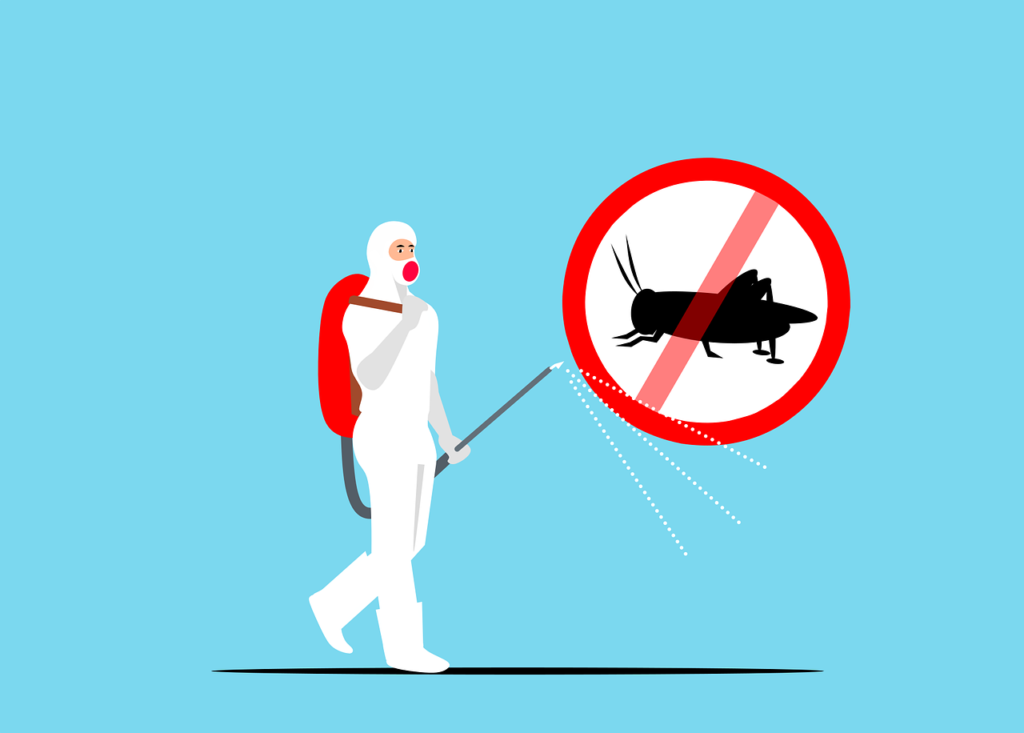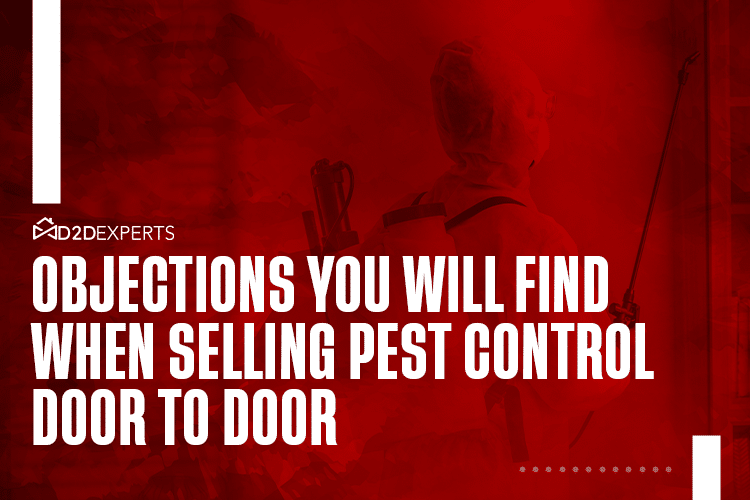Selling pest control door to door is complex. Convincing someone to part with money by knocking on their door and asking them to is asking a lot. People are pressed for time, have other things to do, and don’t know you. Why should they take time from their busy schedule, listen to you ramble, and then give you some cash? you might negotiate a new pest control contract, but people are happy with their current pest control. Therefore, there are many objections you will find when selling pest control door to door.

The Typical Door to Door Pest Control Sales Technique
It would be best if you convinced people that your product is the right choice. That it offers more value than competitors, even if it is more expensive than your competitor’s. You are probably familiar with the pattern of every “yes” preceded by five “no’s.” The solution is to pitch, listen, acknowledge objections, explore issues and respond with more information and a close:
- Pitch your product
- Listen
- Acknowledge objections
- Explore issues
- Respond
- Close
Always stay aware that objections are part of the door to door pest control sales. Not everyone is going to sign up for what you offer. D2D Experts offers all-in-one solutions for building and maintaining a reputable door-to-door sales firm.
Common Objections While Selling Pest Control Door To Door
You could have the most incredible product known to man, and not everyone will want it. But, unfortunately, objections are part and parcel of door to door pest control sales. Door-to-door sales training and education platforms are excellent for tackling common sales issues.
Some of the most common objections you are likely to hear when selling solar door to door include the following:
- Pest control too expensive: this is probably the most common objection you will hear in door to door pest control sales. Rather than discussing the cost, try to discuss the real-world value of the product.
- There’s nothing in the budget for pest control: this is also a common objection in door to door pest control sales, especially from a business. You can help a willingness to buy by securing funds from senior staff or scheduling a follow-up.
- I have a contract with another pest controller: sometimes prospects feel a little trapped by agreements. You can discuss the current relationship and arrange a switch-over discount.
- I can get pest control cheaper somewhere else: a potential customer usually feels they can get a more affordable product. Highlight the differences and the value in switching.
- I have too much going on to deal with something as trivial as pest control right now: people generally don’t have much time, but it could be a brush-off. So instead, offer a follow-up meeting at their convenience to discuss the product.
- I’ve never heard of this pest control product before: this is a golden opportunity to provide detailed information concerning your product. Highlight the value in a purchase without pitching.
- Pest control is dangerous: word-of-mouth is more powerful than ever with social media and review technology. But take the opportunity to take customer feedback and offer insight into product value Perhaps your product is a less toxic or organic solution.
You build trust and credibility with prospective customers by handling objections correctly when selling pest control door to door, since you offer a positive experience. If they don’t buy from you that day, you always have the chance to schedule a follow-up appointment when they have the time, funds, or authorization to make a purchase.

Objection Handling Techniques In Door To Door Pest Control Sales
As an elite salesperson, leaving an objection unaddressed is one of the worst mistakes you can make in door to door pest control sales. It is best if you handle objections as early as possible throughout your technique when selling pest control door to door. The longer a potential customer retains a negative opinion of a product like pest control, the less likely they are to be convinced. Their opposing views become reinforced, and your job becomes much more complicated.
Therefore, you should welcome objections immediately and never take a defensive stance about a product or service. Directly going on the defensive risks alienating a prospect and will strengthen their negative perception. The best door to door pest control sales approach is to be proactive in dealing with objections and tackling them head-on. You can do this with the following methods:
Ask Questions Frequently
While explaining about your pest control product, take the time to ask the potential client about what they think. For example, ask if there is any specific issue that would prevent them from buying.
Actively Listen to what a Prospect is Saying
Try to be proactive in your listening to gauge the true sentiment about your product. Consciously take on everything a customer is saying about the product or reasons they cannot buy it.
Repeat Statements for Validation
Further to listening, repeat the customer statements back to them. This allows you to form a picture of the obstacles ahead and where you need to go and clarify their view of pest control.
Try to Arrive at a Conclusion
Once obstacles are identified, you can arrive at a solution that benefits both parties. For example, if money is the issue, explain the value of buying your product.
Always Enquire about a Follow-Up
Sometimes a potential client doesn’t have the time, money, or authorization to discuss a product such as pest control. In this case, always make an appointment to return or take personal details for arranging one.
In Summary
Learning a pest control sales pitch and repeating it time and time again is the easiest part of door-to-door pest control sales. Most of the time, it’s more akin to a script. But every potential client is different. Some will immediately switch if you are lucky, and some require a little more convincing and object to your product. By using some of the objection handling techniques highlighted, you can overcome some of the biggest hurdles in door to door pest control sales that prevent your ongoing success.
























